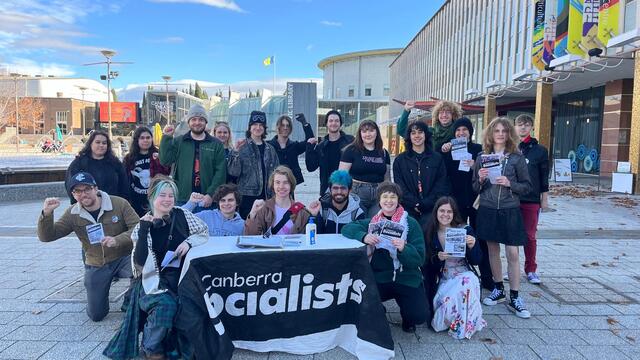The Good Oil by Rod Brown *
The sale of Telstra is now a priority for the Howard Government. However, if Treasury thinking dominates, the $30 billion proceeds will be used for debt retirement or to fill holes in the health, defence and education budgets. The better option is for funds generated from national asset sales to be directed back to expenditure on other national assets. To achieve this policy outcome will not be easy, and requires a coalition of lobby groups to really force the issue. As discussed in last month’s column, Local Government could engineer a New Deal with the Commonwealth on financial grants – if it gets its act together. Equally it could be a key player in the Telstra sale. Some colleagues and I chewed on this informally last week, and arrived at a realistic option.
- Let Treasury have a win – put $10 billion towards debt retirement.
- Possibly let some other federal portfolios have a win – put $5 billion into areas that will assist Australia’s long term development such as industry research and education.
- Leave defence and health out of the equation because their portfolios look after themselves because of their power and influence.
- Let regional Australian have the major win – by putting $15 billion into a National Infrastructure Fund over a 10 year period. Now let’s extend the thinking.
What?
Expenditure would be directed towards infrastructure requirements that cannot be met by the private sector, or where some public/private investments make sense. There are pockets of need in the following categories.
- Economic infrastructure – airports, energy generation/transmission facilities, sea ports, railways, gas and water pipelines telecommunications, transport terminals and hubs, cold stores and bulk storage facilities, water treatment plants, sewerage systems.
- Social infrastructure – schools, universities, hospitals, health and day care centres, training and research facilities, business incubators, tourism facilities, museums. libraries, sports facilities, prisons.
Where?
The convergence of opinion is that there are 45-50 regions that meet the definition – some of these are outer urban corridors, such as Cranbourne-Berwick in Victoria and Ipswich in Queensland, and should be included because of their infrastructure problems and their linkages to rural regions.
How?
The trick is to avoid disbursing the funds via the usual beauty contest approach that is a National Infrastructure Fund run by bureaucrats with 30 page forms, 20 criteria and a 10 per cent success rate for applicants is absolute lunacy. The winners should not be simply those with the best submissions. (Cripes, this could hurt my business!)
The better option is to let the citizens decide their infrastructure priorities. And Local Government should be only one player – if you left it to some Councils, you would have zillions of sealed roads and little else. Regional stakeholders should be empowered to decide on a properly constituted group representing industry, education, and Local Government. Commonwealth and State Government observers should be there to advise on issues, and why not Federal MPs – including those in opposition – being full members of the decision making group? Let them all decide – and bear the good and bad consequences. The needs of some regions are greater than others, and the funding formula needs to account for distance/geography – some regions might warrant double that of another.
Federal Cabinet would set the broad parameters, and the Commonwealth Grants Commission would generate the answer. Anyway, let’s say $15 billion divided by 45 regions equates to $333 million per region over 10 years – or $33 million a year. This is a serious figure, but infrastructure expenditure of this order is justified.
Why?
Apart from the logic that the sales of the Telstra asset should be spent on other public assets, the agglomeration effects driving the growth of Sydney and Melbourne demand some countervailing expenditure. While NSW Premier Bob Carr is calling for incentives to steer migrants into regional areas, wouldn’t it be better to strengthen the regional economies with infrastructure and anchor investments so that they generate investment and jobs? While this is easy to say, it must be done with some ‘strategic intelligence’.
In this context, Professor Mike Enright (Hong Kong University) is delivering a paper in Cairns in October that provides an intellectual framework for the above issues. Mike was the project director for one of the most important pieces of economic and business research in the last 20 years – published in the book ‘The Competitive Advantage of Nations’ by Professor Michael Porter of Harvard University.
Mike Enright’s thinking is very relevant to Australia’s needs. For example, in a paper to the Kiel (Germany) Institute workshop last November, he argues that public goods, such as education, training, infrastructure, and certain types of research can be under supplied by markets. In particular, he argues, ‘Regions provide focal points for investments and new business activities. Local industry associations may provide commercial research on foreign markets. Local Government makes contributions to industry specific infrastructure. Local universities often provide industry specific research and specialised training. Such investments and the spillovers that result, allow firms to leverage their own investments in innovative activities’.
The problem of course in Australia is that Local Government and universities are cash strapped. This means that the Federal and State Governments must play a heightened role, because leaving it wholly to the market is not the answer. However throwing public funds at marginal projects, or at single companies, is not the answer either. The solution is an infrastructure program that progressively builds an integrated infrastructure system at the local level, and thereby enhances the investor attractiveness of regions.
These and other issues will be discussed at The Competitiveness Institute’s annual conference in Cairns from 9-11 October. Professor Enright will be there, as will the Deputy PM, John Anderson, the Queensland Premier, plus World Bank, UN and OECD representatives, company executives, and Local Government representatives from 30 plus countries. It promises to be a fascinating three days.
* Rod Brown’s Canberra based consultancy group, Australian Project Developments Pty Ltd, specialises in industry/regional development and government liaison. For further information telephone (02) 6231 7261 or email apd@orac.net.au







